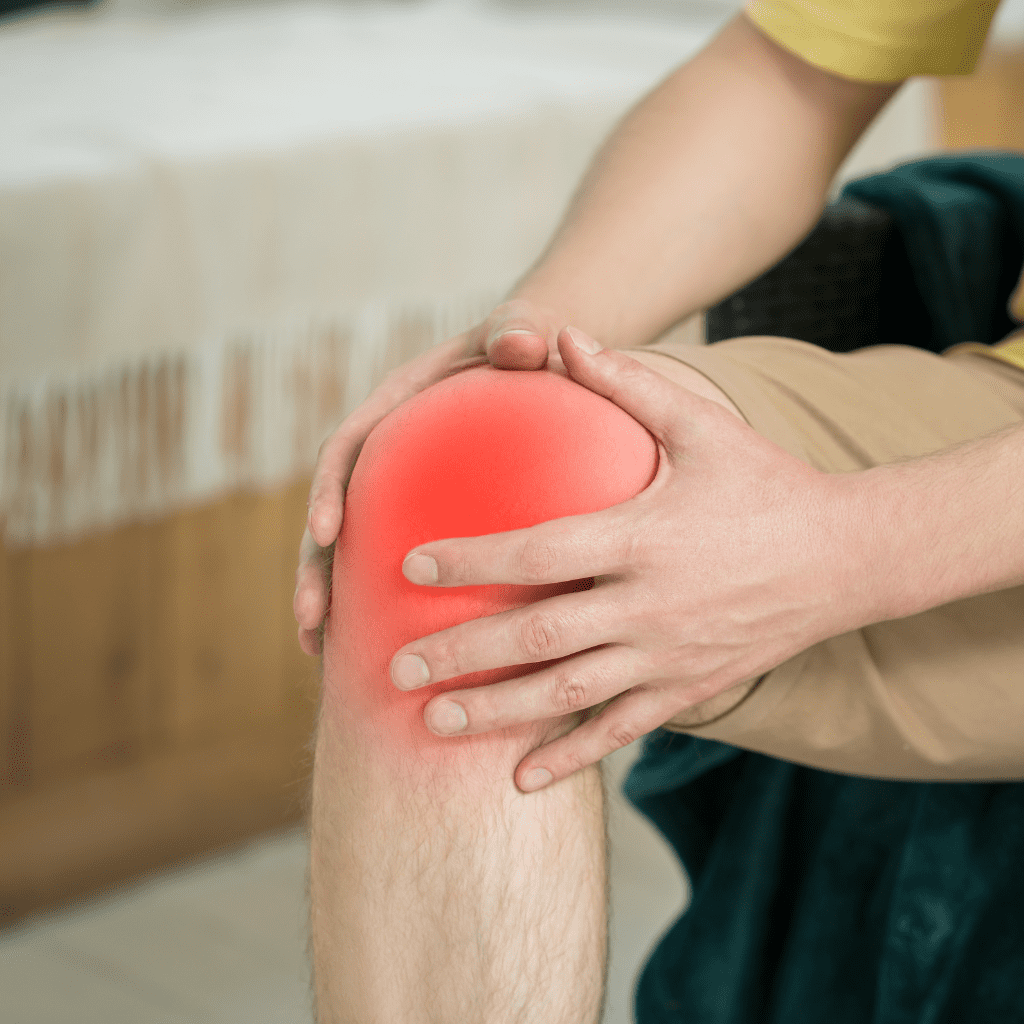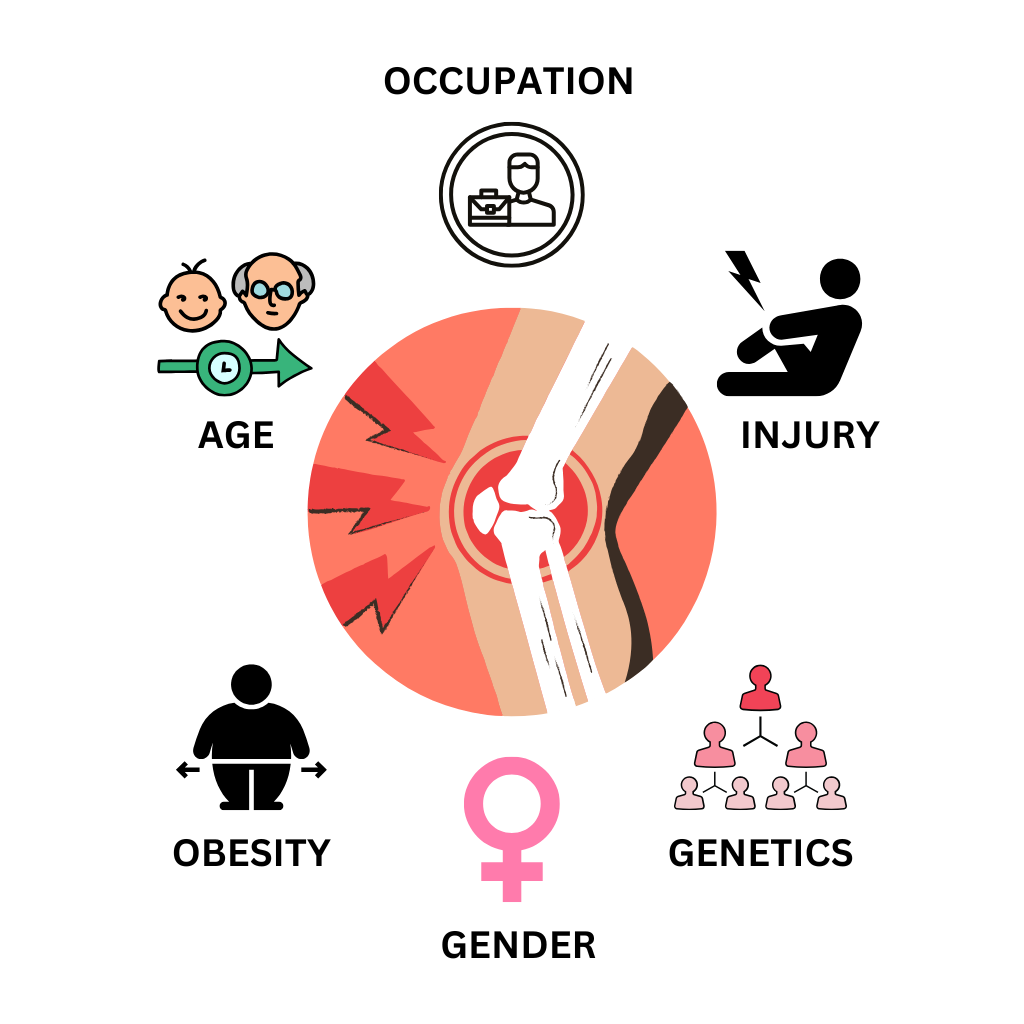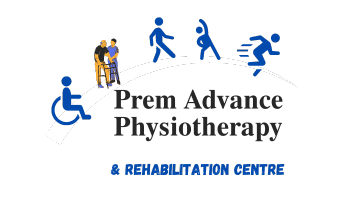
Knee pain treatment from one of the best physiotherapy clinics in greater noida west : At Prem Advanced Physiotherapy.
Knee osteoarthritis (OA) is a prevalent and often debilitating condition that affects millions of people worldwide. It’s a leading cause of pain and disability, particularly among older adults, but it can affect individuals of all ages. At Prem Advanced Physiotherapy Clinic, we understand the impact that knee osteoarthritis can have on your daily life, and we are here to offer effective, evidence-based treatments to help you manage this condition and maintain an active, pain-free lifestyle.
What is Knee Osteoarthritis?
Osteoarthritis is a degenerative joint disease characterized by the breakdown of cartilage, the tissue that cushions the ends of your bones within the joint. In knee osteoarthritis, the cartilage in the knee joint gradually wears away, leading to pain, swelling, stiffness, and reduced mobility. As the cartilage deteriorates, the bones may begin to rub against each other, causing further pain and discomfort.
Over time, knee osteoarthritis can lead to the formation of bone spurs (osteophytes) and a narrowing of the joint space, which exacerbates the symptoms. In severe cases, it can significantly impair your ability to perform everyday activities, such as walking, climbing stairs, or even sitting and standing.
Symptoms of Knee Osteoarthritis :
The symptoms of knee osteoarthritis can vary in severity and progression. Common symptoms include:
-Pain: The most common symptom of knee OA is pain, which typically worsens with activity and improves with rest. Pain may be localized to the knee joint or may radiate to other areas, such as the thigh or shin.
-Stiffness: Stiffness in the knee joint, particularly after periods of inactivity or upon waking in the morning, is a hallmark symptom of osteoarthritis. This stiffness may improve with movement but can limit your range of motion.
-Swelling: Inflammation within the knee joint can cause swelling, which may be accompanied by warmth and tenderness. Swelling can be persistent or may fluctuate depending on activity levels.
– Decreased Range of Motion: As knee osteoarthritis progresses, you may find it increasingly difficult to fully bend or straighten your knee. This limitation in movement can interfere with daily activities and may lead to muscle weakness.
– Crepitus: A grinding, popping, or clicking sensation when moving the knee joint is known as crepitus. This occurs when the roughened surfaces of the bones rub against each other due to the loss of cartilage.
– Joint Instability: In some cases, knee osteoarthritis can cause the knee to feel unstable or as though it may give way. This can increase the risk of falls and further injury.
If you are experiencing any of these symptoms, it is important to seek professional evaluation and treatment. At Prem Advanced Physiotherapy Center our expert physiotherapists assess your condition and develop a personalised treatment plan to address your symptoms and work toward improving your quality of life.
Causes and Risk Factors of Knee Osteoarthritis
Knee osteoarthritis is a multifactorial condition, meaning that it can be influenced by a combination of genetic, mechanical, and environmental factors. Understanding these factors can help in both preventing the onset of knee OA and managing its progression.
– Age: Age is one of the strongest risk factors for knee osteoarthritis. As we age, the cartilage within the joints becomes more susceptible to wear and tear, making older adults more prone to developing OA.
– Gender: Women are more likely than men to develop knee osteoarthritis, particularly after the age of 50. Hormonal changes during menopause are believed to contribute to this increased risk.
– Obesity: Excess body weight places additional stress on the knee joints, accelerating the breakdown of cartilage. Obesity is also associated with low-grade inflammation, which can further contribute to the development and progression of osteoarthritis.

– Genetics: A family history of osteoarthritis increases the likelihood of developing the condition. Genetic factors can influence the structure and integrity of cartilage, as well as the body’s inflammatory response.
– Injury: Previous knee injuries, such as fractures, ligament tears, or meniscal damage, can increase the risk of developing osteoarthritis later in life. These injuries can alter the mechanics of the knee joint, leading to increased wear and tear.
– Occupation: Jobs that involve repetitive knee movements, heavy lifting, or prolonged periods of standing can contribute to the development of knee OA. Athletes who engage in high-impact sports are also at increased risk.
– Biomechanical Factors: Abnormal joint alignment, such as being bow-legged or knock-kneed, can lead to uneven stress on the knee joint, accelerating cartilage degradation.
– Inflammation: Chronic low-grade inflammation, whether due to metabolic syndrome, poor diet, or other health conditions, can contribute to the breakdown of joint cartilage.
Understanding these risk factors allows for early intervention and lifestyle modifications that can reduce the impact of knee osteoarthritis, we provide comprehensive assessments to identify these risk factors and tailor our treatment plans accordingly.
Diagnosis of Knee Osteoarthritis
Diagnosing knee osteoarthritis typically involves a combination of patient history, physical examination, and imaging studies. During your visit, our team of physiotherapists will conduct a thorough assessment to determine the extent of your condition.
– Patient History: We will ask about your symptoms, their duration, and any factors that exacerbate or relieve them also inquire about your medical history, including any previous injuries or surgeries.
– Physical Examination: Our physiotherapists will assess the range of motion, strength, and stability of your knee joint. We’ll also check for signs of inflammation, such as swelling and tenderness.
– Imaging Studies: X-rays are commonly used to confirm a diagnosis of knee osteoarthritis. They can reveal joint space narrowing, bone spurs, and changes in bone density. In some cases, MRI or ultrasound may be used to assess the condition of the soft tissues, such as cartilage, ligaments, and tendons.
Early diagnosis is crucial in managing knee osteoarthritis and preventing further joint damage. If you suspect you may have knee OA and living in greater noida west, schedule an appointment with Prem advance physiotherapy clinic near Ace Divino Sector 1, which is one of the best physiotherapy & rehabilitation facilities for a comprehensive evaluation.

Treatment Options for Knee Osteoarthritis
At our physiotherapy and rehabilitation unit in greater noida west, we offer a wide range of treatment options to manage knee osteoarthritis and other knee pain to improve your quality of life. Our approach is patient-centric, focusing on reducing pain, improving function, and preventing further joint damage. Below are some of the key treatment modalities we offer:
- Physiotherapy
Physiotherapy is the cornerstone of knee osteoarthritis management. Our physiotherapists design individualised exercise programs that target the specific needs of each patient. These programs may include:
– Strengthening Exercises: Strengthening the muscles around the knee, particularly the quadriceps and hamstrings, helps stabilize the joint and reduce the load on the cartilage.
– Stretching and Flexibility Exercises: Improving the flexibility of the muscles and ligaments surrounding the knee can help alleviate stiffness and improve the range of motion.
– Aerobic Conditioning: Low-impact aerobic exercises, such as swimming, cycling, or walking, can help maintain cardiovascular fitness without placing excessive strain on the knee joint.
– Balance and Proprioception Training: These exercises are designed to improve your body’s ability to sense the position of the knee joint, enhancing stability and reducing the risk of falls.
- Manual Therapy
Manual therapy involves hands-on techniques to mobilize the knee joint, improve circulation, and reduce pain. Our physiotherapists are skilled in a variety of manual therapy techniques, including:
-Joint Mobilization: Gentle movements applied to the knee joint to reduce stiffness and improve mobility.
– Soft Tissue Massage: Techniques that target the muscles, tendons, and ligaments around the knee to relieve tension and improve flexibility.
– Myofascial Release: A specialized technique that targets the fascia (connective tissue) to relieve pain and improve movement.
- Electrotherapy
Electrotherapy involves the use of electrical stimulation to reduce pain, improve circulation, and promote healing. Common electrotherapy modalities used in the treatment of knee osteoarthritis include:
– Transcutaneous Electrical Nerve Stimulation (TENS): TENS units deliver low-voltage electrical currents to the affected area, helping to block pain signals and reduce discomfort.
– Ultrasound Therapy: High-frequency sound waves are used to generate deep heat within the tissues, promoting blood flow and reducing inflammation.
– Laser Therapy: Low-level laser therapy (LLLT) uses light energy to stimulate healing and reduce pain and inflammation in the knee joint.
- Weight Management and Lifestyle Modification
Managing your weight is crucial in reducing the stress on your knee joints. Our team at Prem Advanced Physiotherapy Clinic provides personalized advice on exercise and nutrition to help you achieve and maintain a healthy weight. We also offer guidance on lifestyle modifications that can alleviate the symptoms of knee osteoarthritis, such as:
– Activity Modification: We’ll help you identify activities that may be contributing to your knee pain and suggest alternative exercises or strategies to minimize strain on your joints.
– Ergonomic Adjustments: Our physiotherapists can provide recommendations on how to modify your work environment, home setup, or daily routines to reduce knee stress.
- Education and Self-Management
Empowering our patients with knowledge is a key component of our treatment approach. We provide education on the nature of knee osteoarthritis, the benefits of exercise, and strategies for managing symptoms at home. Our goal is to help you take an active role in your treatment and make informed decisions about your care.
Why Choose US ?
If you check on google physiotherapy near me in Greater noida west and look for patients reviews and stories it says everything about our trusted facility and the care we offer at Prem Advanced Physiotherapy Clinic, we are dedicated to providing the highest standard of care for our patients. Here’s why you should consider us for your knee pain treatment:

– Expertise: Our physiotherapists are highly trained and experienced in the management of knee osteoarthritis. We stay updated with the latest research and treatment techniques to ensure you receive the best possible care.
– Personalized Care: We believe that every patient is unique, and so are their treatment needs. We take the time to understand your specific condition, goals, and preferences to develop a treatment plan tailored just for you.
– Comprehensive Services: From physiotherapy and manual therapy to electrotherapy and lifestyle advice, we offer a wide range of services to address all aspects of knee osteoarthritis management.
– Patient- Centric Approach: Your well-being is our top priority. We focus on delivering compassionate, patient- centric care that not only addresses your symptoms but also improves your overall quality of life.
– Convenient Location: Located in [Insert your clinic’s location], Prem Advanced Physiotherapy Clinic is easily accessible and offers a welcoming environment for all our patients.
Take the First Step Towards Pain-Free Living :
Knee osteoarthritis doesn’t have to control your life. With the right treatment and support, you can manage your symptoms, maintain your mobility, and continue doing the things you love. Schedule an appointment at Prem Advanced Physiotherapy Clinic, greater noida west, today to begin your journey towards better joint health and a more active, pain-free life.
